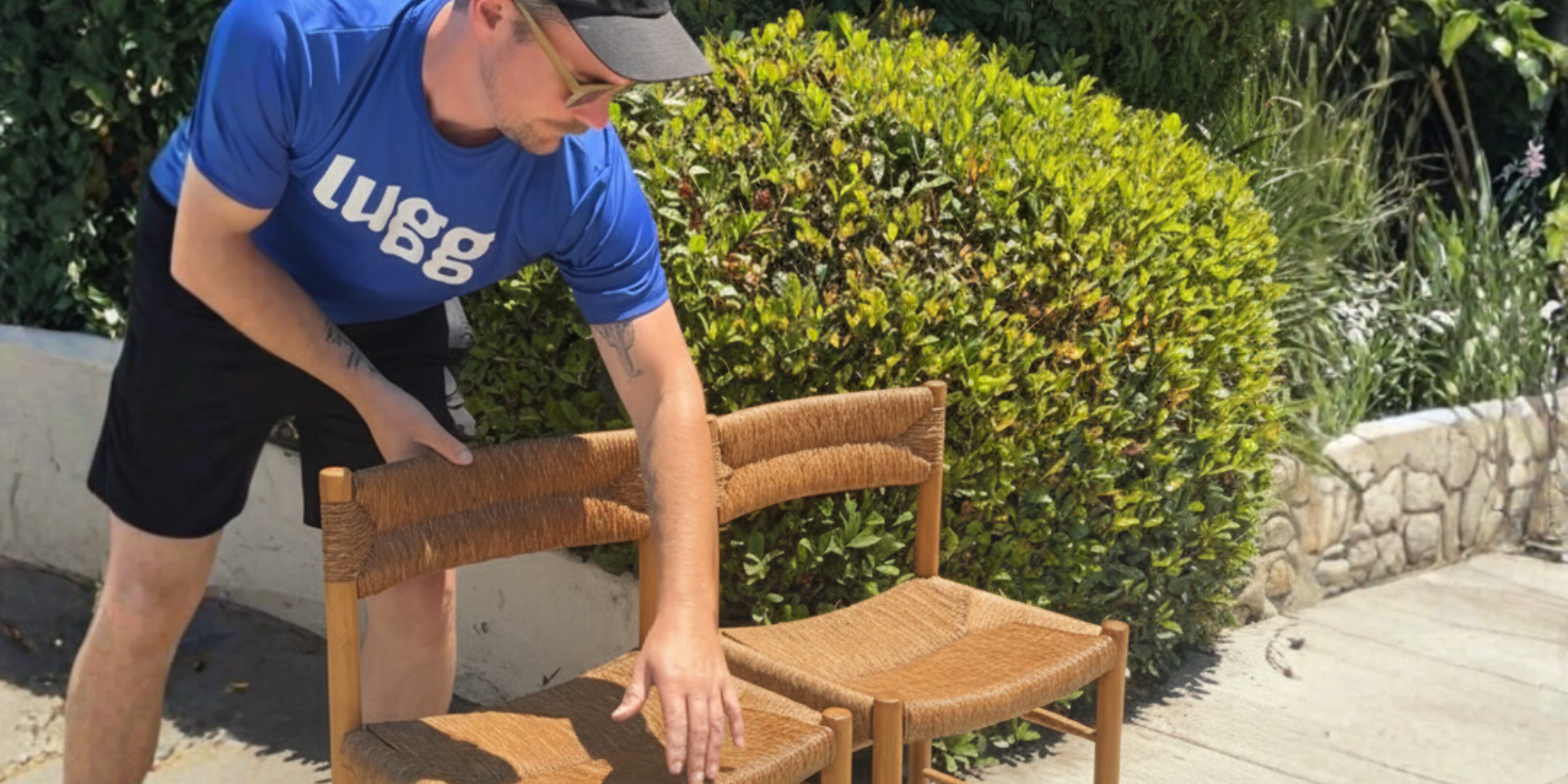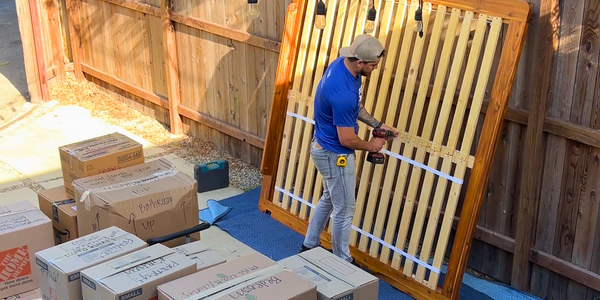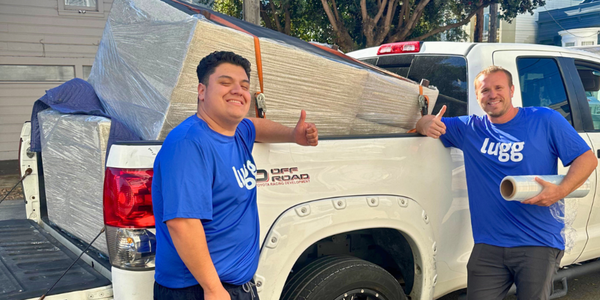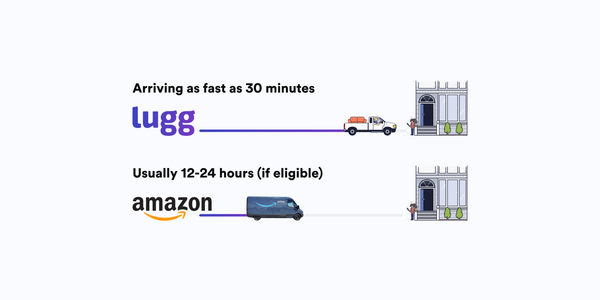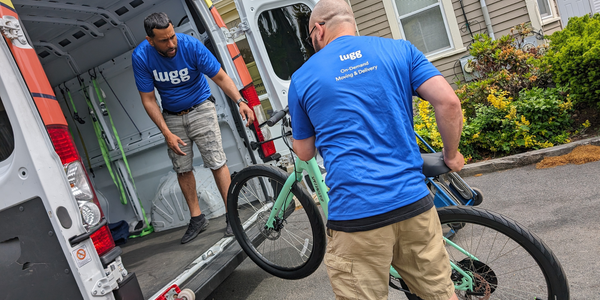You finally bring home that gorgeous mid-century dresser you scored online, but the drawers stick, it smells a little musty, and you realize it doesn’t even fit through your doorway.
Buying used furniture is one of the smartest ways to decorate sustainably and affordably. But between misleading photos, mystery stains, and pickup logistics, a dream deal can quickly become a big regret.
We’re breaking down the 5 most common (and costly) mistakes secondhand shoppers make, plus how to avoid them. This way, you can confidently find pieces with great quality and great bones.
We’ll also cover where to find high-quality pre-loved pieces and how to get them delivered fast and safely with Lugg.
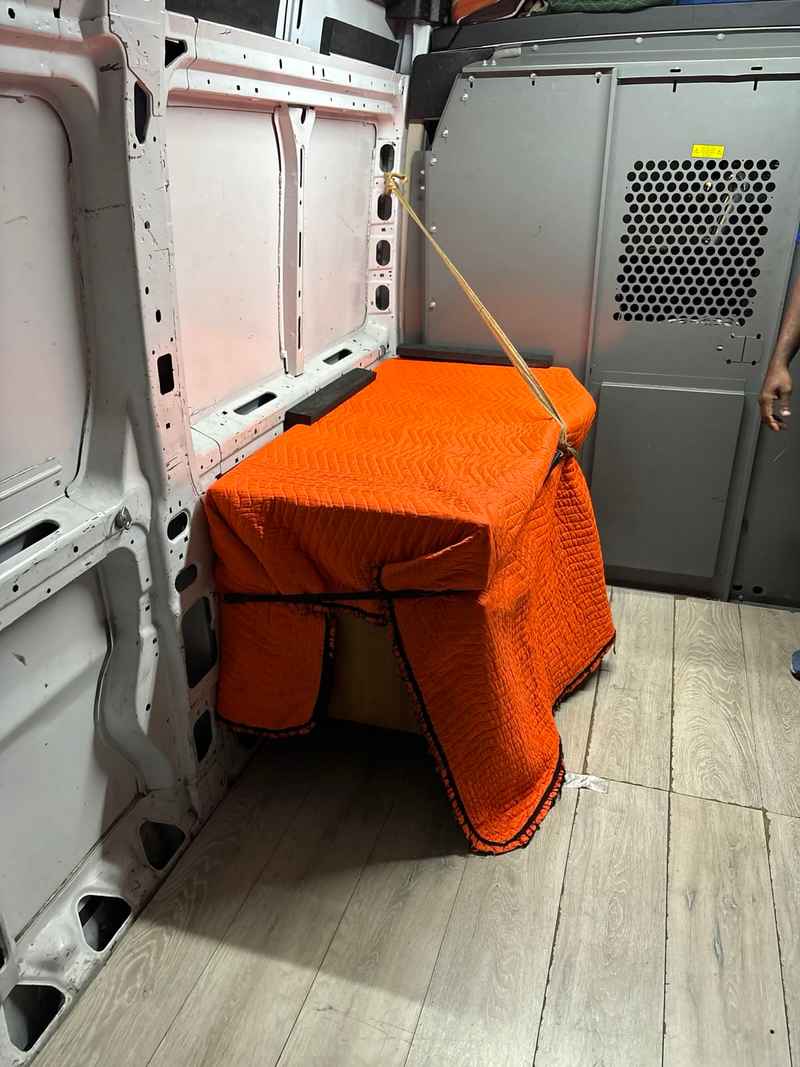
Mistake 1: Confusing cosmetic flaws with structural damage
It’s easy to get fixated on what you can see (a scratch, chip, or faded finish) and completely miss what’s underneath. Some shoppers talk themselves out of great finds because of minor cosmetic flaws that could be fixed with a little sanding or paint. Others fall in love with the look and convince themselves they can “make it work,” only to later discover cracked frames, wobbly legs, or particle board that can’t be repaired.
Both mistakes are costly. Cosmetic issues are easy to fix; structural issues almost never are. Buying something with a hidden frame problem or cheap construction can turn a deal into a money pit once repairs or replacements add up.
The fix: Focus on good bone structure. This is the sign of integrity and craftsmanship that makes a piece last.
- Wood: Look for solid wood and dovetail joints (a hallmark of quality craftsmanship). Avoid lightweight, hollow-feeling pieces or veneer that’s peeling or bubbling.
- Upholstery: Press, sit, and listen. A sturdy frame should feel solid and silent. No creaks, wobbles, or sagging cushions. Fabric and cushions can be reupholstered; a weak frame can’t be rescued.
If you’re shopping online:
- Ask sellers for close-up photos of joints, undersides, or back panels (places that reveal construction quality).
- Request a short video walkaround (if possible); movement and sound can reveal loose frames.
- Check brand names and material details in listings (Kashew makes this easier by highlighting both).
Pro tip:Shop on platforms that include verified brand information, detailed materials, and a clear wear-condition rating (such as Excellent, Very Good, Good, or Fair).
Mistake #2: Forgetting the triple-measure rule
You fall in love with a vintage sofa and hit “Buy.” It shows up… and it won’t fit through the front door. Now you’re stuck on the curb, weighing bad options: paying extra to hoist it upstairs, taking off door frames, or disassembling the sofa itself. If none of that works, you’re scrambling to resell it or paying to dump it, losing time and money in the process.
All of this could’ve been avoided with one simple habit: measuring before you buy. A bargain isn’t a bargain if it never makes it inside your home.
The fix:Follow the Triple-Measure Rule before clicking “purchase.”
- Measure your space (height, width, depth):
- Know exactly where the piece will live.
- Don’t forget baseboards, wall outlets, or low windowsills, which eat up inches.
- Measure the piece itself:
- Ask the seller for exact dimensions or confirm the numbers listed online.
- For sofas and chairs, note arm height, back height, and leg height; those few inches make a big difference.
- If possible, ask for the diagonal depth (corner-to-corner across the back), which determines whether it can angle through tight spaces.
- Measure all entry points:
- Doorways, hallways, staircases, and elevators all need to clear your furniture’s biggest measurement.
- Watch for tricky angles, low ceilings, or narrow turns that could block your path.
Before finalizing your purchase, also check whether parts can be removed or disassembled (like sofa legs or bed frames) to help pieces fit through tight spots.
If you’re shopping online:
- Ask for photos of the item’s back and underside to confirm construction and whether parts detach.
- Request full measurements (length, depth, height, and diagonal).
- Save the listing and measurements so your delivery team knows what they’re working with.
Platforms like Kashew make this easier by including detailed dimensions and material info right on the listing. You’ll also see location details and room categories listed, which can give you ideas where the piece might fit in your own space. Sellers are carefully selected and vetted for accuracy, so you can focus on craftsmanship and structure, not worry about sketchy listings or vague descriptions.
And if you’re using Lugg for delivery, the Luggers are experts at navigating tight corners and fitting furniture through tricky entryways. They’ll ensure your furniture gets from curb to living room, hassle-free.
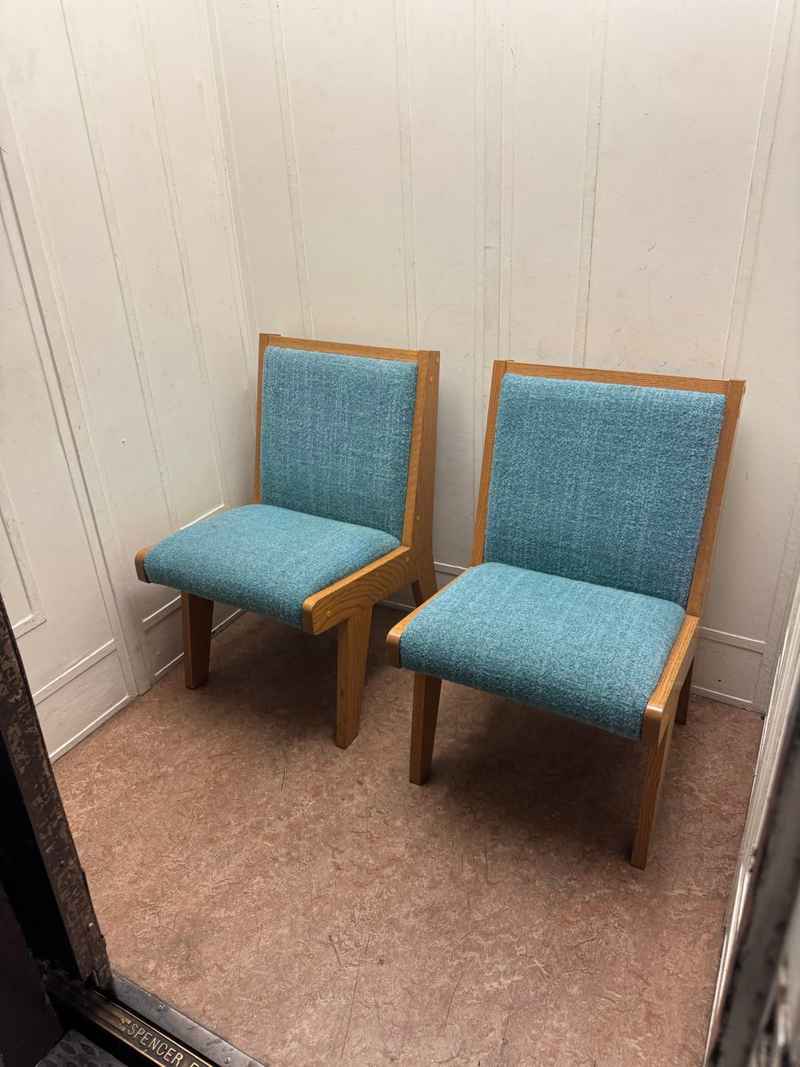
Mistake #3: Skipping the sniff test (and the pest check)
You score a stylish armchair at a great price and bring it home, only to realize it smells like cigarette smoke, mildew, or last decade’s pets. Even worse, that “vintage” piece might come with tiny, uninvited guests hiding in the seams. Odors and pests are two of the most common (and most frustrating) surprises secondhand shoppers face.
The problem is, you can’t always rely on photos or descriptions to tell the full story. When you’re buying online, you don’t have the luxury of a sniff test or close inspection, so you have to know what questions to ask and what details to look for before clicking buy.
The fix:Never skip hygiene. It’s just as important as style and structure.
If you’re shopping in person:
- Sniff and inspect. Don’t be shy. Lean in and smell upholstery seams, cushions, and the back or underside of furniture.
- Look for clues: small black dots (bed bug droppings), fine sawdust or pinholes (signs of woodworms/termites), or musty odors that signal mold or mildew.
- Trust your gut: If it smells off or feels questionable, walk away. Odors embedded in upholstery or foam are nearly impossible to remove fully, even with professional cleaning.
If you’re shopping online:
- Check the listing carefully: Reputable marketplaces often include condition details and seller notes about previous ownership or home environment (smoke-free, pet-free, etc.).
- Ask questions: Message the seller directly. Was it stored in a garage or a basement? Has it been around pets or smoke?
- Look closely at photos: Zoom in on seams, zippers, and undersides; high-quality sellers often show every angle.
- Buy from curated platforms: Sites like Kashew vet listings for quality and condition. Listings clearly describe condition, materials, and other key details. If you still have questions, you can message the seller directly for more context.
If you’ve already brought it home and discovered an issue:
- For mild odors: Start by researching what’s safe for your specific material; not every finish or fabric reacts well to sunlight or cleaning agents. If it’s appropriate, air the piece outside on a dry day (avoiding direct sunlight for delicate materials), sprinkle baking soda or place odor-absorbing charcoal bags nearby, and use an upholstery-safe fabric refresher as needed.
- For persistent smells or visible pests: Don’t risk it. Consult a professional cleaner or pest specialist immediately. In many cases, returning or responsibly disposing of the piece will save you time (and sanity) in the long run.
Pro tip:When it’s time for pickup, Lugg movers can transport your find safely and inspect for visible damage or odor before it’s set up in your home.
Mistake #4: Buying on impulse instead of researching the brand and material
You spot what looks like a designer-quality table at a bargain price and click “Buy Now” before someone else grabs it. The photos looked great, but when it arrives, the “solid oak” turns out to be laminate. The legs are wobbly, and suddenly that cheap find doesn’t feel like much of a win.
It’s easy to get caught up in the thrill of a deal, especially online, where listings move fast. But skipping the research stage can lead to disappointment, wasted money, or even scams. Sometimes that “too-good-to-be-true” price really is just that.
The fix: Look for longevity and value before you buy.
- Check the materials: Prioritize solid wood, kiln-dried frames, top-grain leather, metal hardware, and durable fabrics. Avoid listings that feel vague or skip material details altogether.
- Research the brand: If a seller mentions a brand name, take a few minutes to verify it. Well-known manufacturers tend to use higher-quality construction and hold their value longer, even when used.
- Ask questions: Message the seller about the piece’s age, original purchase location, and materials. A reputable seller should be transparent and happy to share details.
- Trust your instincts: If the price seems unusually low for what’s claimed, or the seller is pushing for a quick decision, take a step back. Scammers often rely on that sense of urgency to catch impulsive buyers.
Tech-savvy tip:If you’re unsure about a listing, try a quick reverse image search on the product photos. If the same image appears on multiple unrelated listings or brand sites, it’s a red flag. The seller might be misrepresenting what they’re offering.
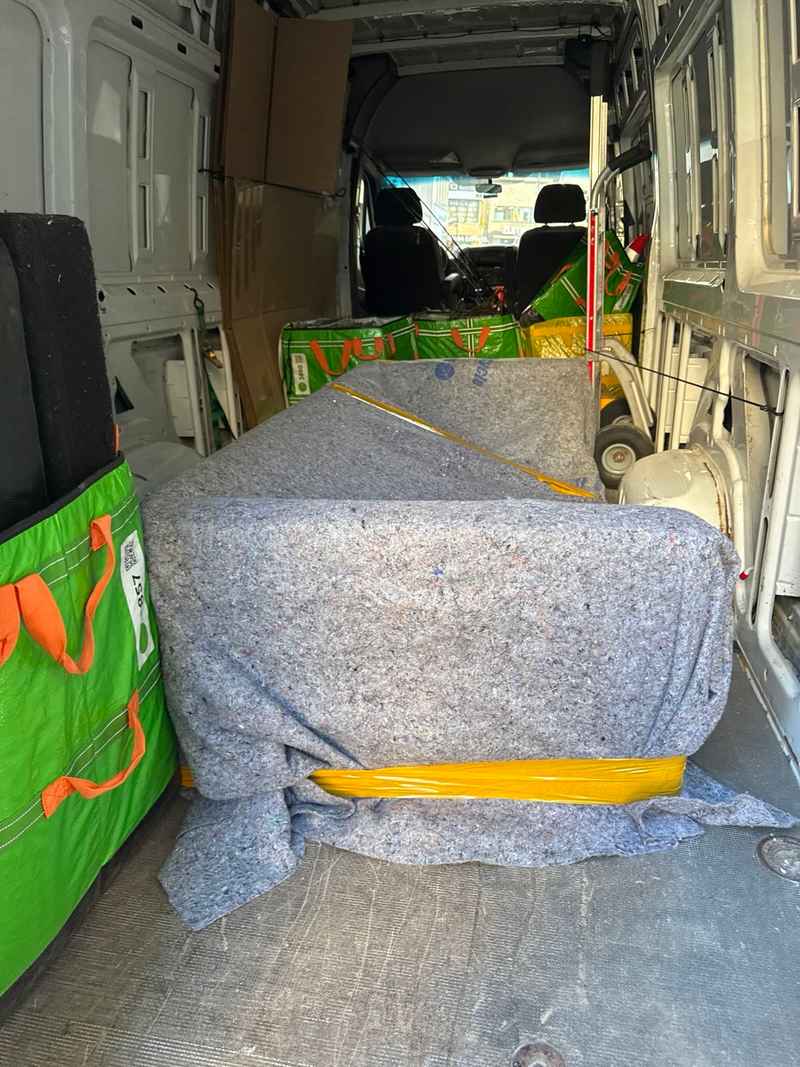
Mistake #5: Assuming delivery is easy
You’ve scored a great deal on a used dresser, now comes the hard part: getting it home. Maybe you plan to borrow a friend’s truck, rent one yourself, or figure it out later. But delivery often turns into the biggest headache of the whole process.
Renting a moving truck can be risky (and pricey) if you’re not used to driving one. Borrowing help from friends sounds easier than it is: coordinating schedules, lifting heavy items safely, and navigating narrow hallways isn’t exactly a quick weekend favor. And assuming the seller offers delivery? That’s hit or miss.
Between the time, effort, and risk of damage, the logistics can end up costing more than the furniture itself.
The fix:Plan your logistics before you buy.
- Factor delivery into your total budget. The true cost of a piece includes not just the purchase price, but also how it gets to your home.
- Know your options: If the seller doesn’t offer delivery, look into professional pickup services that specialize in furniture.
- Skip the DIY stress: Instead of juggling rentals, favors, and guesswork, book a trusted service that handles the heavy lifting safely and efficiently.
With Lugg, you can schedule on-demand same-day pickup and delivery directly from the seller’s location. Professional movers arrive with the right vehicle, handle the furniture with care, and bring it right into your room of choice. No door-frame dings or strained backs. It’s affordable, fast, and completely stress-free, letting you focus on enjoying your new find instead of worrying about how to get it home.
Pro Tip: Shop smarter with Kashew (The sourcing solution)
Buying secondhand shouldn’t feel like a gamble. That’s where Kashew comes in, a curated online marketplace designed to make purchasing pre-loved furniture as safe, simple, and rewarding as buying new.
Kashew connects buyers with handpicked, verified sellers. Every piece is vetted for quality, condition, and accuracy. No scams. No guesswork. Just designer-quality furniture at honest secondhand prices.
Here’s why it’s the smarter way to source your next piece:
- Quality you can trust: Kashew avoids the pitfalls of impulse buying by featuring durable, designer-level furniture made to last. Helping you skip fast furniture that won’t hold up.
- Transparency you can see: Listings include verified measurements, material details, and clear photos, helping you avoid mistakes like buying the wrong size (Mistake #2) or missing signs of wear (Mistake #3).
- Peace of mind built in: Kashew offers white-glove delivery across the continental U.S. and free returns if an item doesn’t match its description, so you can shop used, without the usual risk.
- Sustainable by design: Every Kashew purchase keeps high-quality furniture out of landfills and gives it a second life, making it a win for your home and the planet.
With Kashew, you’re not just buying used furniture, you’re buying smarter, more sustainably, and with total confidence.
The solution to delivery: Lugg (resolving mistake #5)
Even when you find the perfect piece, getting it home safely can be the biggest hurdle. Most used furniture isn’t shipped; it’s local pickup only. That means figuring out transportation, finding help to lift it, and making sure it fits in your vehicle (if you even have one).
Lugg makes furniture delivery simple, safe, and stress-free. It connects you with professional local movers and the right vehicle for your item, on your schedule.
Here’s how it works:
- On-demand or scheduled delivery: Book a pickup within 30 minutes or up to 30 days in advance. Whatever fits your timeline.
- Same-day service: Most deliveries happen within hours, not days or weeks.
- Local expertise: Lugg specializes in short-distance, city-to-city moves. Ideal for marketplace finds, local sellers, or store pickups.
- Right vehicle, every time: From pickup trucks, cargo vans, sprinter vans, and even box trucks, movers arrive with the right equipment for your specific piece.
- Room placement included: Lugg teams bring your item inside and place it right where you want it. No curbside drop-offs, no heavy lifting required.
No rentals, no favors, no stress - just a fast, reliable way to bring home your next great find.
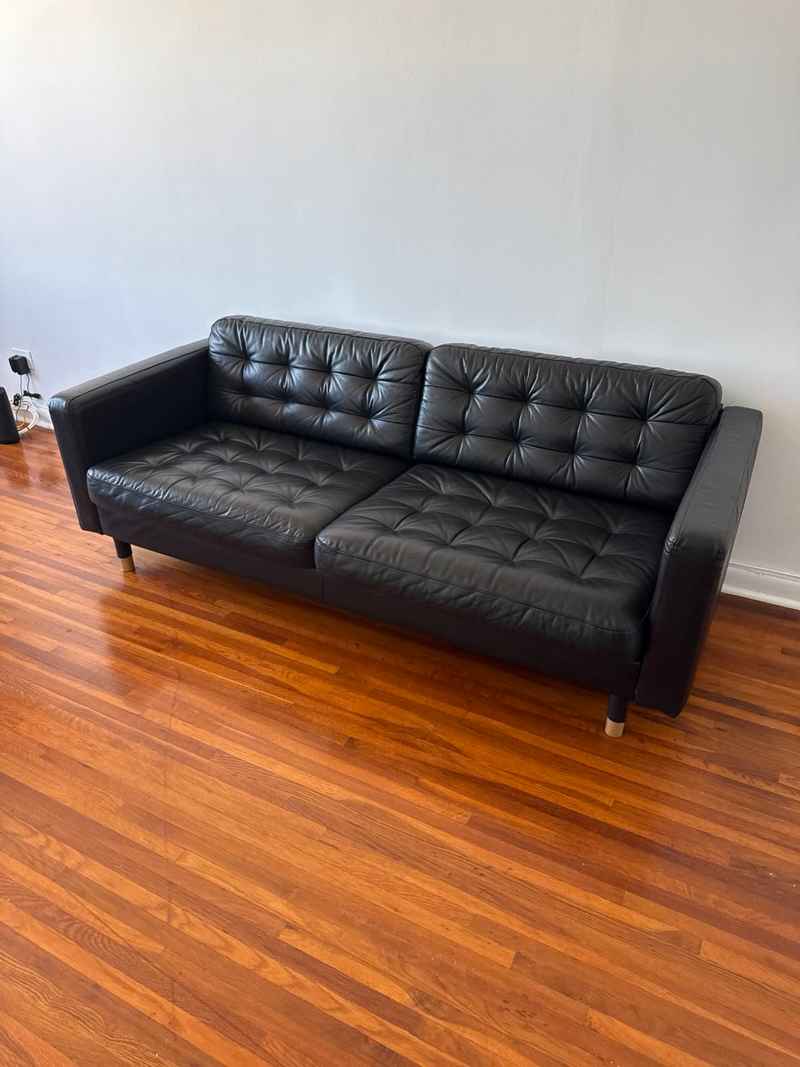
Bringing it all home
Used furniture shopping can be fun, sustainable, and incredibly rewarding. When you know what to avoid.
Remember these five tips! And if you’re ever buying used furniture locally, let Lugg handle the heavy lifting. Your dream piece is out there, just waiting for a smart, savvy buyer like you.


